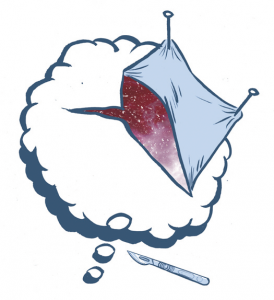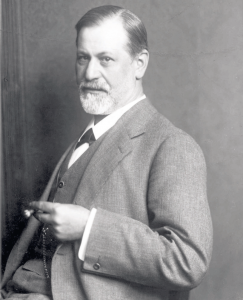WEDNESDAY, 3 OCTOBER 2012
Dreaming pervades our lives, even when we’re not tucked beneath the covers, fast asleep. In philosophy, for example, it regularly enters discussions about the meaning of life. The ‘dream argument’ holds that what we call ‘reality’ may, in fact, be a dream because it relies on sensory input that cannot be trusted. Shakespeare propagated this philosophy through his literature. “We are such stuff as dreams are made on, and our little life is rounded with a sleep”, he wrote in The Tempest. In more recent years, dreaming has also entered political discourse. Martin Luther King, Jr., for example, delivered a riveting appeal to end racial segregation with a speech entitled “I Have a Dream.” But why is it that we dream, often several times each night and for an average of six years of our lives? Scientists are still struggling to find an explanation, but they do have some theories.Before the 20th century there was no formal approach to studying the science behind dreaming. The first written record of dream interpretation dates back to 1275 BC, a time when the Mesopotamians and Egyptians believed that dreams were a medium for delivering divine messages. The ancient Greek philosopher Heraclitus abandoned this religious take on dreams and suggested, instead, that dreams were created by individuals within their own minds. A few centuries later, Aristotle also discarded the notion that dreams were an externally driven phenomenon. In his treatise On Dreams, he posited that residual sensations from waking hours course through the bloodstream and stimulate the heart, producing dreams as a result.
The heyday of psychoanalysis at the end of the 19th century saw the study of dreams become more scientific. With the publication of The Interpretation of Dreams, Sigmund Freud popularised the understanding of dreams as expressions of repressed desires. Freud linked symbols in dreams to specific sexual desires and maintained that dreams allowed the unconscious mind to act out these, often socially unacceptable wishes. According to Freud, the taboo subject matter of dreams explains why we remember so few of them. In fact, on average we forget 50 per cent of our dreams five minutes after waking. Freud’s protégé Carl Jung believed dreams allowed a synthesis of the day’s event by permitting us to reflect on ourselves and solve our problems by taking the time to reflect on them.
But to understand why we dream, scientists realised they first needed to better understand what exactly a dream is. As a result, physiological studies of the 1950s formed the beginnings of Oneirology; the formal scientific study of dreams. A major milestone in the field was the discovery of rapid eye movement (REM) sleep. Two researchers at the University of Chicago, Eugene Aserinksy and his supervisor Nathaniel Kleitman, serendipitously discovered REM after a physicist published a paper in Nature claiming that he could identify the onset of sleep in his fellow train passengers by the rate at which their eyelids twitched.
Most dreaming occurs during REM; the last of the five sleep stages which comprises a single cycle beginning approximately 90 minutes after first falling asleep. Each dream usually lasts between five and 20 minutes. A good night’s sleep comprises multiple sleeping cycles with progressively longer periods of time spent in REM. During REM, heart rate and breathing quicken, blood pressure rises and body temperature varies much more considerably. In addition, the body enters a momentary state of paralysis in order to pre-empt any physical and potentially dangerous enactment of a dream. This condition, known as REM atonia, involves the release of an amino acid called glycine from the brain onto the neurons that innervate muscles.
Having established the physiology behind the dreaming process, scientists in the second half of the 20th century started to study the neurobiology of dreams. In 1977, Harvard psychiatrists John Allan Hobson and Robert McCarley proposed that dreams arise from random electrical impulses generated by the brain during sleep. According to Hobson and McCarley’s ‘activation-synthesis hypothesis’, the waking mind’s attempt to make sense of this imagery results in the stories that form the plots of our dreams. They found that brain wave patterns can be used to differentiate between subjects experiencing REM versus non-REM sleep. Different brain waves emit electrical voltage at different rates and are individually referred to as alpha, beta, delta and theta waves. During REM sleep, brain waves are desynchronous, whilst non-REM sleep comprises more synchronous patterns of the four distinct types of brain waves. By this point in time, scientists could apply at least three parameters to identify REM sleep: The electro-oculogram, which measures eye movement, the electromyogram, which measures muscle tone, and the electroencephalogram, which measures brain activity.
Nowadays, scientists have even more advanced technology for studying dreams, such as functional magnetic resonance imaging (fMRI) machines that detect blood flow in the brain. With this equipment, they have been able to map specific features of dreams to different regions of the brain. The occipito-temporal cortex, for example, is believed to be responsible for visual imagery, whilst the amygdala allows us to experience emotions and the prefrontal cortex introduces logic into our dreams. Structural integrity of the hippocampus is also important, as the size of this part of the brain is comparatively reduced in insomniacs. Such neurobiological studies have led to a new hypothesis that attempts to explain why we dream by postulating that dreams are necessary for the maintenance of ‘synaptic homeostasis.’ Constant stimulation of our brain during the day leads to many connections being made between different brain cells. Dreaming may be a means of sifting through these connections, strengthening the ones that are important and weakening the ones that are not.
Much attention has also been directed to the relationship between dreams, eating disorders and a slew of mood disorders including depression, bipolar disorder, suicide and post-traumatic stress disorder, which have all been linked to abnormal dreaming habits. Individuals with these conditions tend to recall fewer or less detailed dreams than the norm. Currently, these relationships are being further explored for their potential use in diagnosing and predicting the outcome of patients with psychological disorders.
The fact that similar motifs reappear in everyone’s dreams—from being naked in public to falling down, being chased, sitting or forgetting to arrive for an exam, flying, running without purpose or having teeth fall out—suggests that there is an underlying biological purpose for the dreaming process. Scientists may still not have fully wrapped their minds around what that purpose is, but much progress has been made in the field of Oneirology, as dreams have now entered the domain of science.
Leila Haghighat is an MPhil student in the Department of Medicine



